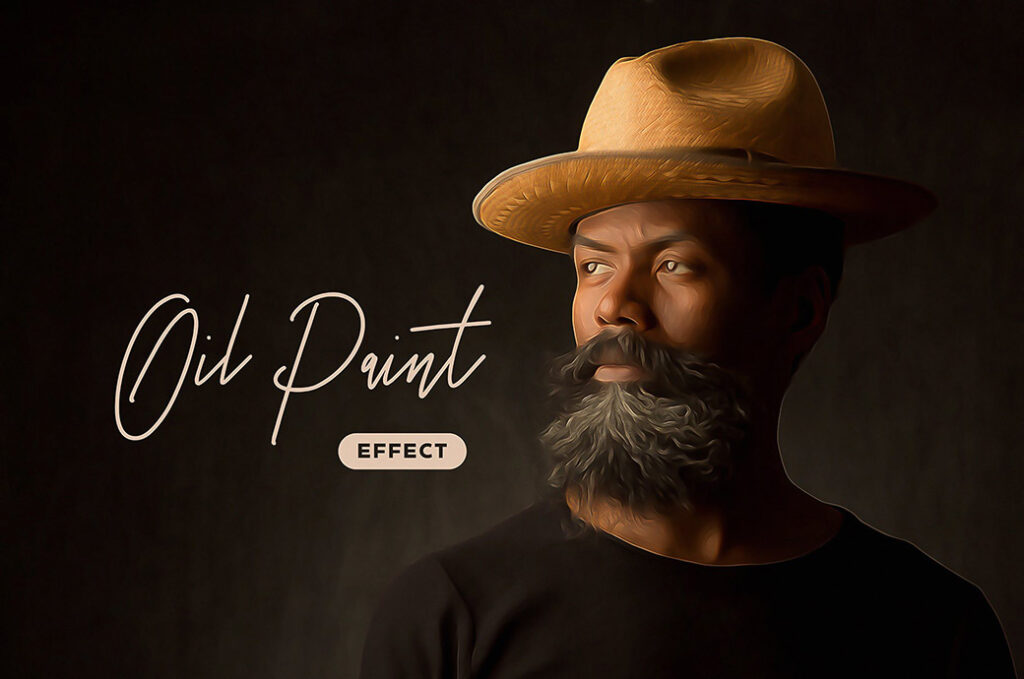Mastering Artistry: A Comprehensive Guide on How to Use the Oil Paint Filter in Photoshop CC

Introduction:
Digital artistry has evolved tremendously, and Adobe Photoshop CC remains at the forefront, offering a plethora of tools and filters to unleash the creative potential of artists and photographers. One such powerful tool is the Oil Paint filter, a feature that brings the richness and texture of traditional oil painting to the digital canvas. In this extensive guide, we will delve into the step-by-step process of using the Oil Paint filter in Photoshop CC, unlocking the ability to transform ordinary images into captivating, painterly masterpieces.
I. Understanding the Oil Paint Filter:
1.1 The Artistic Appeal of Oil Painting:
- Oil painting has long been celebrated for its rich textures, dynamic brushstrokes, and vibrant colors.
- The Oil Paint filter in Photoshop CC allows digital artists to emulate the beauty of traditional oil painting, adding depth and character to their creations.
1.2 Creative Applications:
- The Oil Paint filter is versatile, suitable for various artistic styles, from realistic landscapes to abstract compositions.
- Artists and photographers often use this filter to add a painterly touch, enhance visual storytelling, or elevate the overall aesthetic of their digital works.
II. Preparing Your Image:
2.1 Image Selection:
- Choose an image that complements the artistic style you wish to achieve. Consider factors such as composition, color palette, and subject matter.
- Images with strong contrast and well-defined details tend to yield more compelling results with the Oil Paint filter.
2.2 High-Quality Source:
- Start with a high-resolution image to preserve details during the filtering process.
- A high-quality source ensures that the final result maintains clarity and allows for more nuanced adjustments.
III. Step-by-Step Guide to Using the Oil Paint Filter:
3.1 Open Your Image in Photoshop CC:
- Launch Adobe Photoshop CC and open the image you want to enhance with the Oil Paint filter.
3.2 Convert to Smart Object:
- Right-click on the image layer in the Layers panel and choose “Convert to Smart Object.”
- This step preserves the original image and allows for non-destructive editing with the Oil Paint filter.
3.3 Access the Oil Paint Filter:
- With the Smart Object selected, go to Filter > Stylize > Oil Paint.
- The Oil Paint filter dialog box will appear, offering various settings for customization.
3.4 Adjust the Stylization and Cleanliness:
- Experiment with the Stylization slider to control the strength of the brushstrokes. Higher values result in more pronounced strokes.
- The Cleanliness slider adjusts the level of detail, with higher values producing smoother, less detailed brushstrokes.
3.5 Fine-Tune the Scale and Bristle Detail:
- The Scale slider determines the size of the brushstrokes. Adjust it to achieve the desired level of detail.
- Bristle Detail controls the prominence of individual bristle strokes. Fine-tune this setting based on your artistic preferences.
3.6 Adjust Lighting and Shine:
- The Lighting slider influences the direction of the light source in the painting. Experiment with different values to enhance dimensionality.
- Shine affects the reflection of light on the brushstrokes. Use this slider to control the level of glossiness.
3.7 Preserve Transparency:
- Check the “Preserve Transparency” option if you want to maintain the transparency of certain areas, allowing the original image to show through in specific regions.
3.8 Preview and Apply:
- Click the “OK” button to apply the Oil Paint filter and preview the changes on your image.
- The filter will be applied to the Smart Object layer, allowing for further adjustments.
IV. Advanced Techniques and Tips:
4.1 Layer Blend Modes:
- Experiment with different layer blend modes for the Oil Paint filter layer to achieve unique effects. Overlay and Soft Light often enhance the painterly qualities.
4.2 Opacity and Layer Masks:
- Adjust the opacity of the Oil Paint filter layer to control its overall impact on the image.
- Use layer masks to selectively apply or mask out the filter in specific areas, allowing for more controlled blending.
4.3 Combine with Other Filters:
- Combine the Oil Paint filter with other Photoshop filters to create complex and layered effects.
- Filters like Gaussian Blur or Texture filters can complement the painterly look of the Oil Paint filter.
4.4 Custom Brushstrokes:
- For more personalized results, experiment with custom brushstrokes by creating your own brushes or downloading specialized brush sets.
- Custom brushes can add unique textures and details to the painting.
V. Saving and Exporting:
5.1 Preserve Original:
- Before saving your final artwork, consider saving a copy of the original layered file.
- This preserves the Smart Object and allows for future adjustments or reapplication of the Oil Paint filter.
5.2 Export Options:
- When satisfied with your masterpiece, choose the appropriate file format for your intended use. JPEG or PNG is suitable for sharing online, while PSD maintains layers for further editing.
VI. Showcasing Your Artwork:
6.1 Digital Platforms:
- Share your Oil Paint filter-enhanced artwork on digital platforms, social media, or personal websites to showcase your artistic flair.
- Engage with the online creative community to receive feedback and inspiration.
6.2 Print and Display:
- For physical display, consider printing your artwork on high-quality canvas or textured paper.
- Frame the piece to enhance its presentation, transforming your digital creation into a tangible work of art.
Conclusion:
The Oil Paint filter in Photoshop CC opens a gateway to artistic exploration, allowing digital artists and photographers to infuse their images with the timeless beauty of traditional oil painting. As you master the intricacies of this filter, let your creativity flourish, and watch as your digital works transform into expressive, painterly masterpieces. Whether you aim for realism or abstraction, the Oil Paint filter empowers you to redefine the boundaries of digital artistry. Illuminate your creations with the richness of brushstrokes, the vibrancy of color, and the depth of texture, ushering in a new era of visual storytelling in the digital realm. Embrace the journey of artistic discovery, one stroke at a time, and revel in the boundless possibilities that the Oil Paint filter brings to your creative repertoire.




